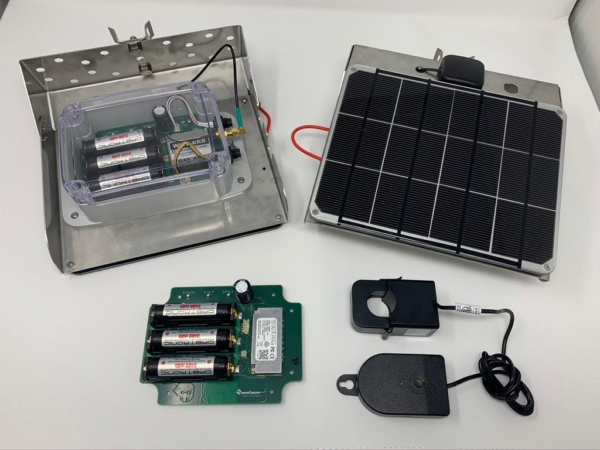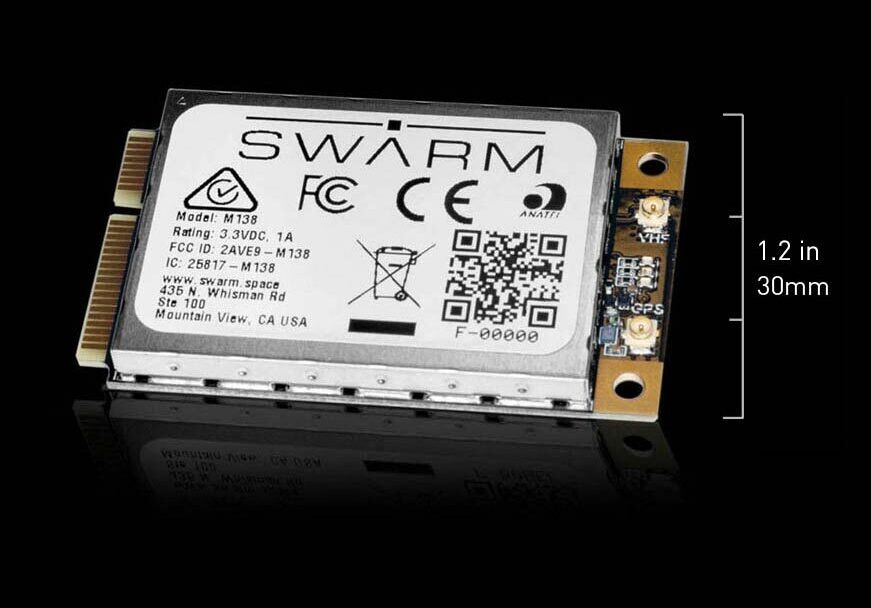
Building a Satellite-Enabled Drought Resilience Network in the Western US
October 20, 2020
Inhabitants of the western U.S. are no strangers to chronic water shortages. From 1980-2000, major droughts and heat waves resulted in costs exceeding $100 billion. As climate change pushes average temperatures higher, soils already starved of precipitation are drying out faster than ever. Some have come to call this the era of the megadrought in the western US.
As anyone who has seen the signs peppered throughout the California Central Valley will know, groundwater is an acute concern for those who use it to feed the country. Farmers in California have to balance their water needs with adherence to the state’s Sustainable Groundwater Management Act (SGMA), which requires farmers to stick to a water budget. The trouble is that groundwater pumping in California is rarely measured, making it difficult to ensure compliance or improve sustainability.
Groundwater measuring and modeling
SweetSense is the leading provider of low-cost remote water, energy, and environmental monitoring solutions. With almost a decade of experience measuring groundwater in remote East Africa, SweetSense is now bringing its critical insights and technology to the West.
Through a grant from the Gordon and Betty Moore Foundation, SweetSense and their research partners at the University of Colorado Boulder developed the Drought Resilience Impact Platform (DRIP). DRIP utilizes advanced sensors and machine-learning calibration tools to monitor water quality and groundwater demand in California and Colorado. It also creates forecasting models that encourage proactive responses to changing conditions. With help from partners at The Freshwater Trust (TFT), the team piloted systems at a number of farms in northern California’s Sacramento-San Joaquin River Delta.
The need for low-cost global connectivity
Many of SweetSense’s devices are deployed in remote areas that do not have access to cell service to transmit critical data back to the Internet to inform decision-making. Satellite connectivity – with its global footprint – is therefore a critical component of success.
SweetSense chose Swarm, the first available affordable connectivity solution powered by small satellites, to provide reliable connectivity for its sensors. With global coverage and no dead zones, Swarm’s network enables SweetSense’s devices to transmit data from even the most far-flung fields.

But it isn’t just coverage that makes Swarm the perfect partner for the DRIP program. The sky-high cost of legacy satellite providers is not compatible with deploying sensors across 200 sites, especially for a grant-funded initiative trying to make a large impact on a limited budget. Swarm’s low-cost hardware and data service – more than six times less expensive than SweetSense’s previous satellite provider – enables the DRIP program’s funding to go farther.
For any pump owner, adding another operational cost is not sustainable. Luckily, the DRIP initiative is free of charge to pump owners for the entire two-year duration of the study. If those same owners choose to then install SweetSense’s remote monitoring solution, the cost will remain low, in part by having fixed monthly data fees, a feature enabled by Swarm’s pricing structure.
You can’t manage what you don’t measure
The first wave of IoT devices in agriculture has shown the limitation of land-based cellular and mesh networks. Data transmission can be intermittent or lost entirely for long stretches, making data integrity impossible to trust. Accurate and timely reporting is necessary to make informed decisions and meet regulatory reporting requirements, but data quality suffers with inconsistent connectivity. Global and reliable satellite connectivity combined with world class software eliminates these issues and helps usher in a new era of highly connected intelligent water infrastructure assets.
SGMA regulation, increases in labor and energy costs, industry consolidation, and new competition has forced farmers to utilize every tool that could help their businesses operate profitably. SweetSense has made it their purpose to unlock the value in groundwater pumps by providing the needed visibility to help owners stay compliant, prevent high maintenance costs, and improve output without increasing labor costs. The global, low-cost connectivity provided by Swarm is key to enabling this visibility in remote agricultural environments.
As growers increasingly rely on IoT devices for precise data capture and analysis, satellite networks like Swarm’s will provide the needed connectivity for devices operating in rural areas. Reliable coverage and costs low enough to permit at-scale deployment are high priorities when choosing a satellite provider for agtech devices. Swarm’s global footprint and affordable hardware and data pricing make us the ideal partner for SweetSense and the DRIP program, allowing critical water sensors to be deployed and stay connected anywhere, at all times.
Stay tuned for more posts in this series that explore how Swarm’s low-cost global network supports SweetSense’s use cases across agriculture, sustainability, and global development.


